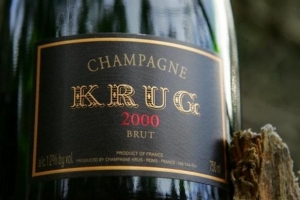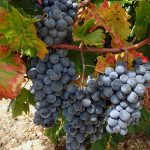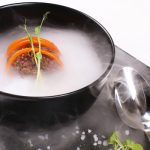
Sparkling wine is a type of wine made by subjecting the wine to a second fermentation and keeping the carbon dioxide gas produced during this fermentation in the bottle. This carbon dioxide formed remains in the pressure-resistant bottle thanks to the wire-reinforced cork. When the bottle is opened, the gas comes out with pressure and foam is formed during this time.
Champagne is a sparkling wine, but not all sparkling wines are champagne. The name “Champagne” is protected by international agreements, only sparkling wines produced under special conditions in the Champagne region of France take this name. These agreements do not cover the United States of America. American producers continue to call their sparkling wines Champagne. Sparkling wines are called Champagne in our country and this has become a habit.
Champagne is produced only in France, while sparkling wine with the champagne method (méthode champenoise) can be produced anywhere. 3 types of grapes are used in the production of champagne: Pinor Noir, Pinot Maunier and Chardonnay. The proportion of the grapes to be mixed is a decision made by the champagne producer, who prepares the base wine (cuvée) by blending their wines from different years. The difference in taste of different products is due to the fact that the producers blend in their own proportions.
Production methods
1- Champagne produced with the traditional method (méthode champenoise) is the result of a laborious and long process. The wine is prepared, a second fermentation takes place in the bottles for about nine weeks. According to the producer’s desire, the wine is aged for several years in the bottle.
2- In the sparkling wines produced by the tank method, fermentation takes place in pressure-resistant tanks so that they are not airtight. Wines are bottled in pressurized environments to prevent the leakage of CO2 gas. This method is especially used in the production of Prosecco and Asti.
3- Another method is the transfer method. The prepared wine is taken into bottles for the second fermentation so that it gains a more complex structure. The wine is then transferred from bottles to large tanks and aged for the desired time.
4- The cheapest and fastest way to produce sparkling wine is to press CO2 gas into the wine, as in carbonated beverages. The label of such drinks has the phrase “carbonated”.
Harvest Year in Champagne
champagne-vintage champagne is produced every year, usually by blending grapes from many years, but champagne produced from grapes from a good harvest season is also rarely produced. Seasonal variation and therefore grape quality in the Champagne region vary from year to year. In the years when the harvest is good, the producers use the grape of that year in the production of champagne and the date of that harvest is written on the bottle. Champagnes produced by blending wines of other years have the letters NV (non-vintage) on their bottles. In order for the harvest year to be written on a champagne, 80% of the grapes must belong to that year.

Types of Champagne
Due to the regional climatic conditions, grapes used in the production of champagne are collected before ripening and turned into must. Since the amount of sugar in the must is insufficient for the yeast to produce enough alcohol, the producer adds sugar to the must according to his own production style. The higher the sugar content, the sweeter the champagne. At the end of the fermentation process, some sugar is added before the wine is bottled for a second fermentation. Thus, the right types of champagne are formed from laconic to sweet.
Extra Brut: It is the driest champagne, not a very common type.
Brut: It is the most popular type of champagne with the most balanced sugar ratio.
Extra Dry: These are dry to medium dry champagnes.
Sec: Medium sec to medium sweet champagnes.
Demi Sec: Sweet champagnes.
Doux: They are very sweet champagnes.
Blanc de Noirs is a French term for white wines produced from black grapes, meaning “white to black” or “white of blacks”. The fleshy part of black grapes is white. When the black grapes are extracted and squeezed from the skin, a slightly yellower but white grape juice is obtained than the white grapes. Pinot Noir or Pinot Meunier or a mixture of both are used in the production of this champagne. In short, the reason why the color of champagne is clear is that grape skins that give color are not used.
Blanc de Blancs
Blanc de Blancs is a French term for champagnes produced from Pinot Blanc grapes, which are a genetic mutation of Chardonnay or Pinot Noir. The term is also sometimes used to denote that only sparkling wine is produced from the Chardonnay grape in other sparkling wine producing regions.
Rose Champagne
To obtain the pink color in the production of pink champagne, the manufacturer uses two methods; either the grape skins are left in the must during the first fermentation or a little Pinot Noir is added to the wine. Rosé wines can be found both vintage and non-vintage.
Spanish Sparkling Wine
In 1970, with the restriction of the European Union on the use of the name Champagne, the name Cava began to be used instead of Spanish Champagne. In order for a wine to be called Cava, it must be produced using traditional methods from certain grapes. Chardonnay and Pinot Noir grapes are also permitted, although producers prefer the so-called “big three” Macabeo, Xarel-Lo and Parellada grapes.
Italian Sparkling Wines
Different sparkling wines are produced in Italy. The best known is Prosecco. Prosecco is a grape variety grown in the Veneto region of northeastern Italy. This famous sparkling wine comes in two flavors: spumante (highly sparkling) and frizzante (low sparkling). One of Italy’s other sparkling wines is Asti, produced from the Muscat grape. Moscato d’ Asti is less foamy, sweeter and less alcoholic. An Italian wine called Lambrusco is generally known as pink, semi-sweet and less sparkling.
American Sparkling Wines
We talked about the American situation regarding the limitations on the name Champagne. Sparkling wine can be produced wherever wine is produced in America. California and New York are the states with the most production.






